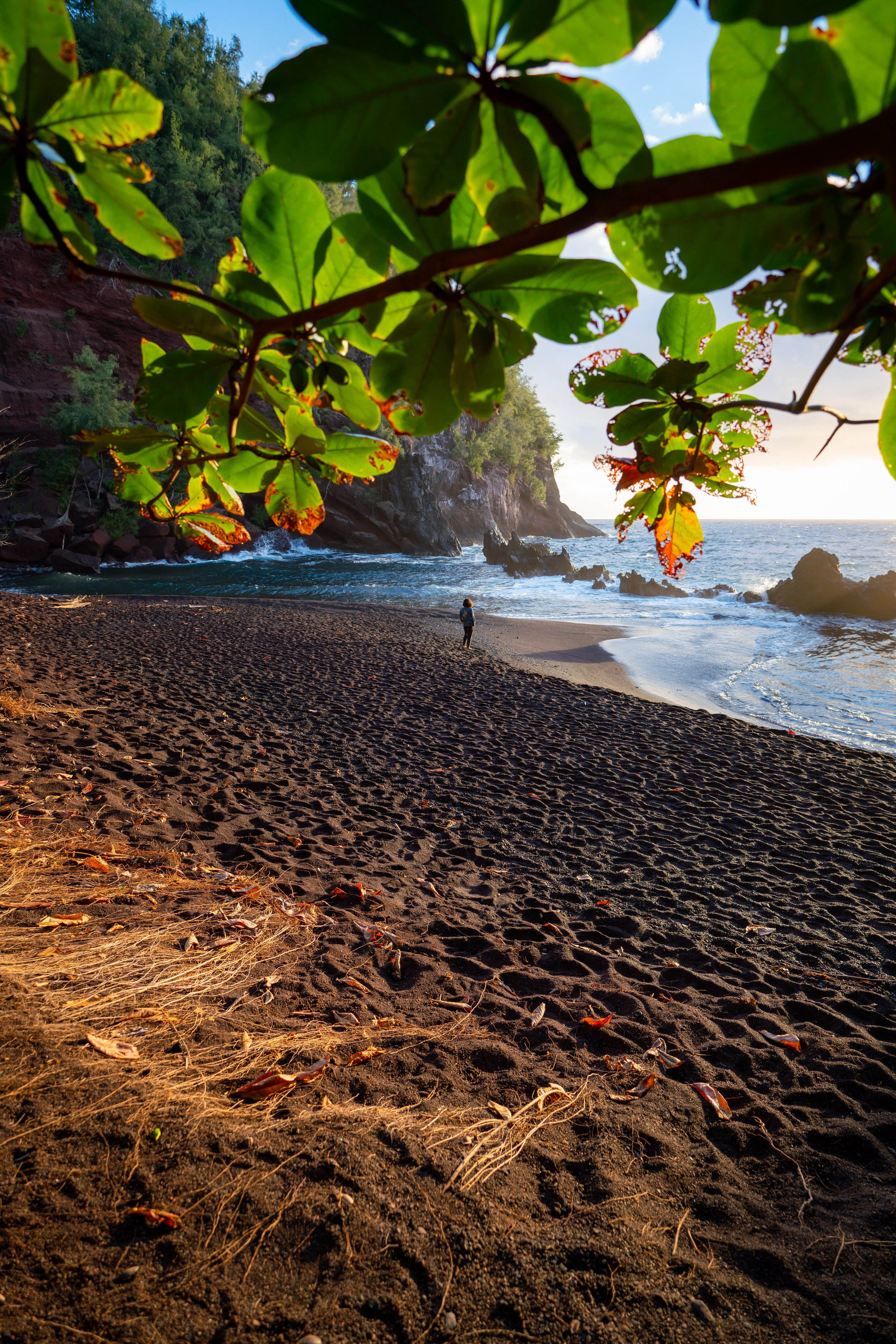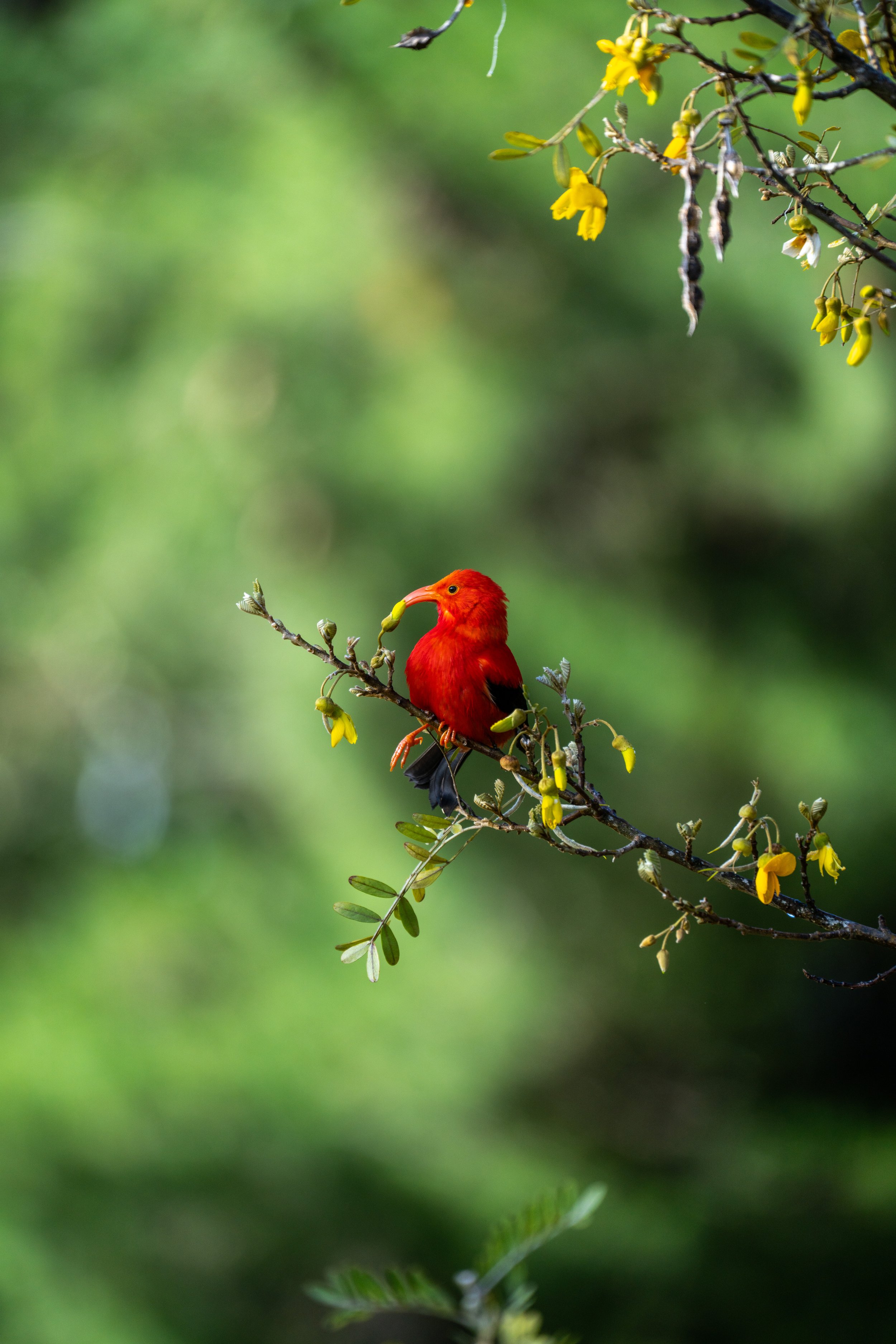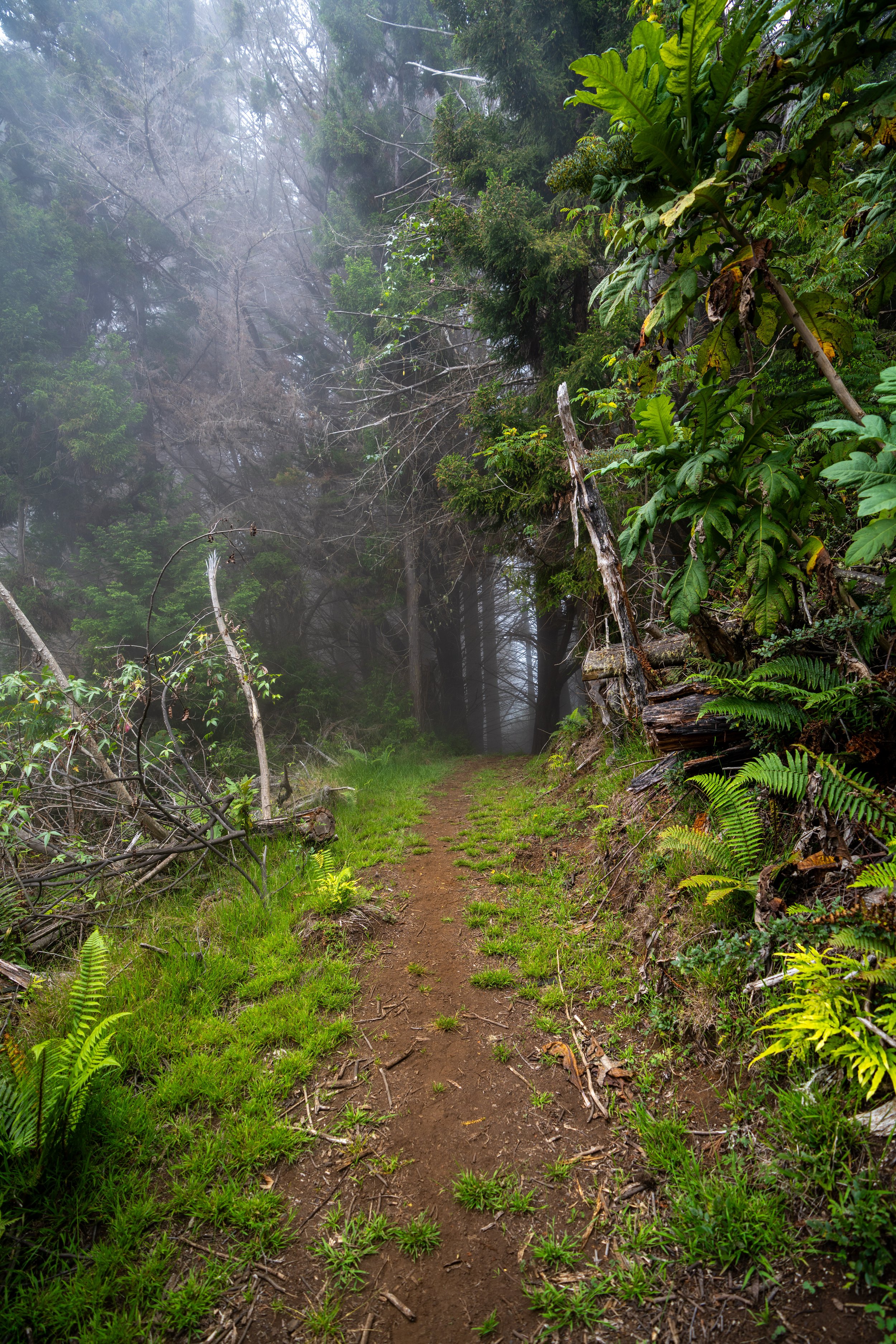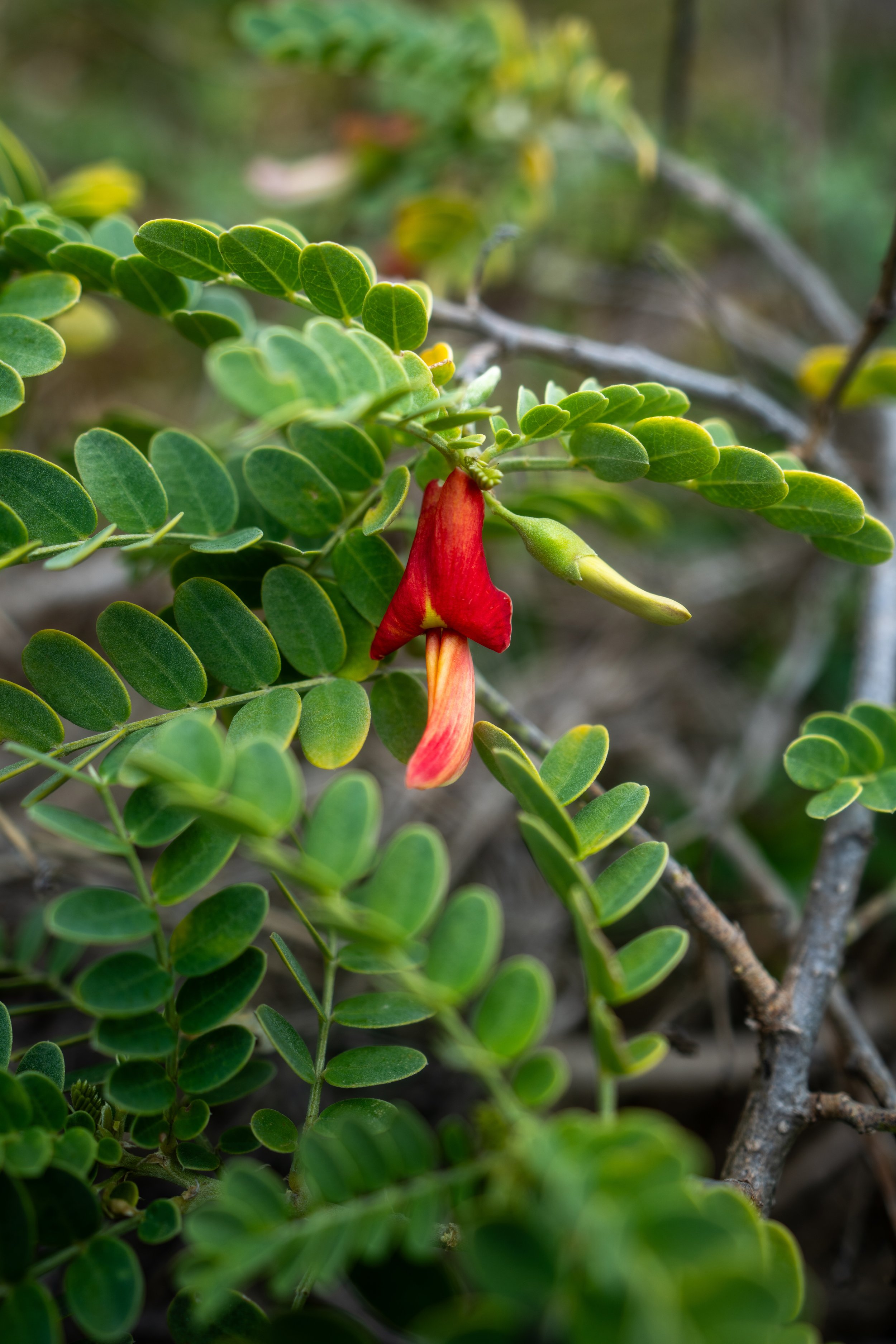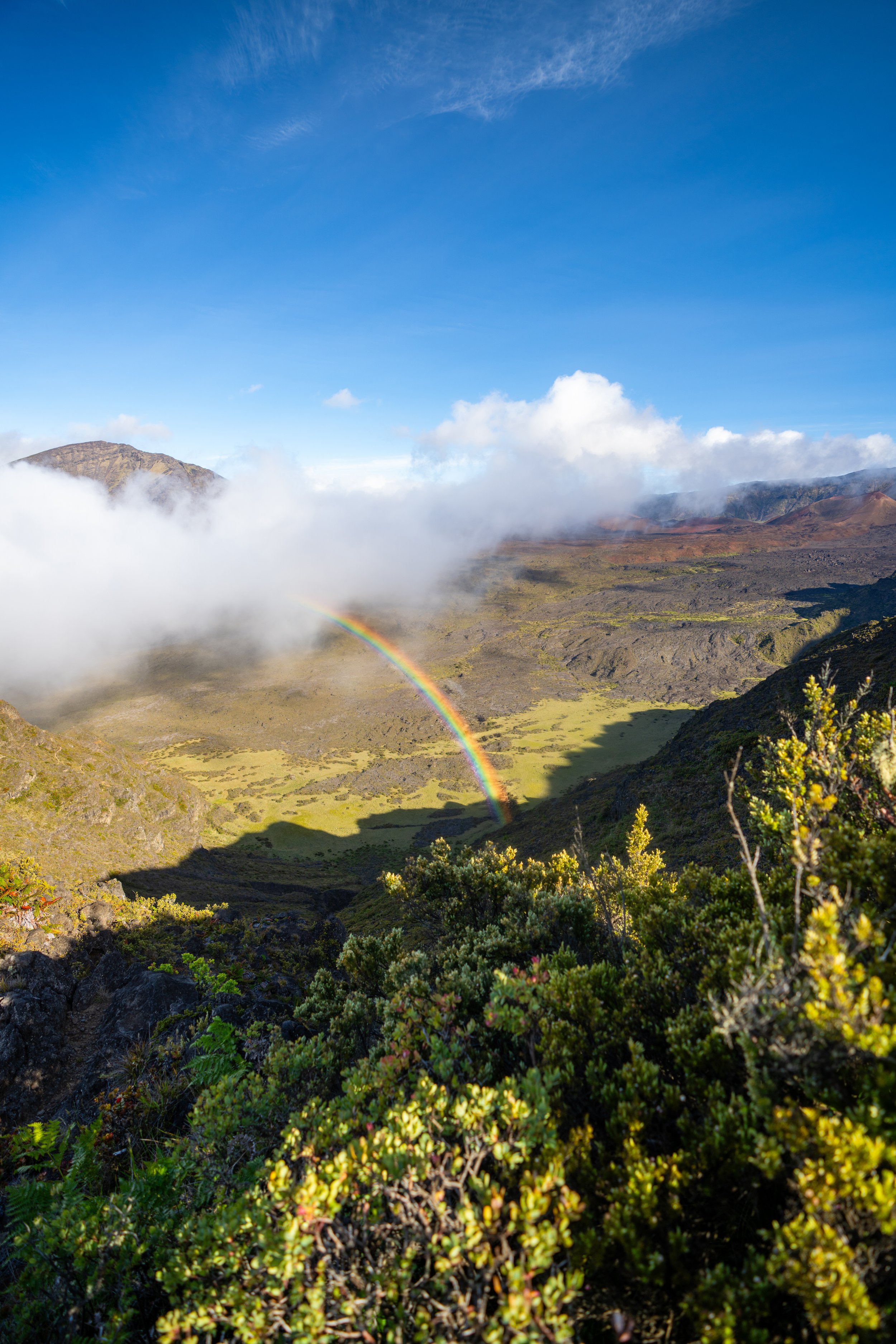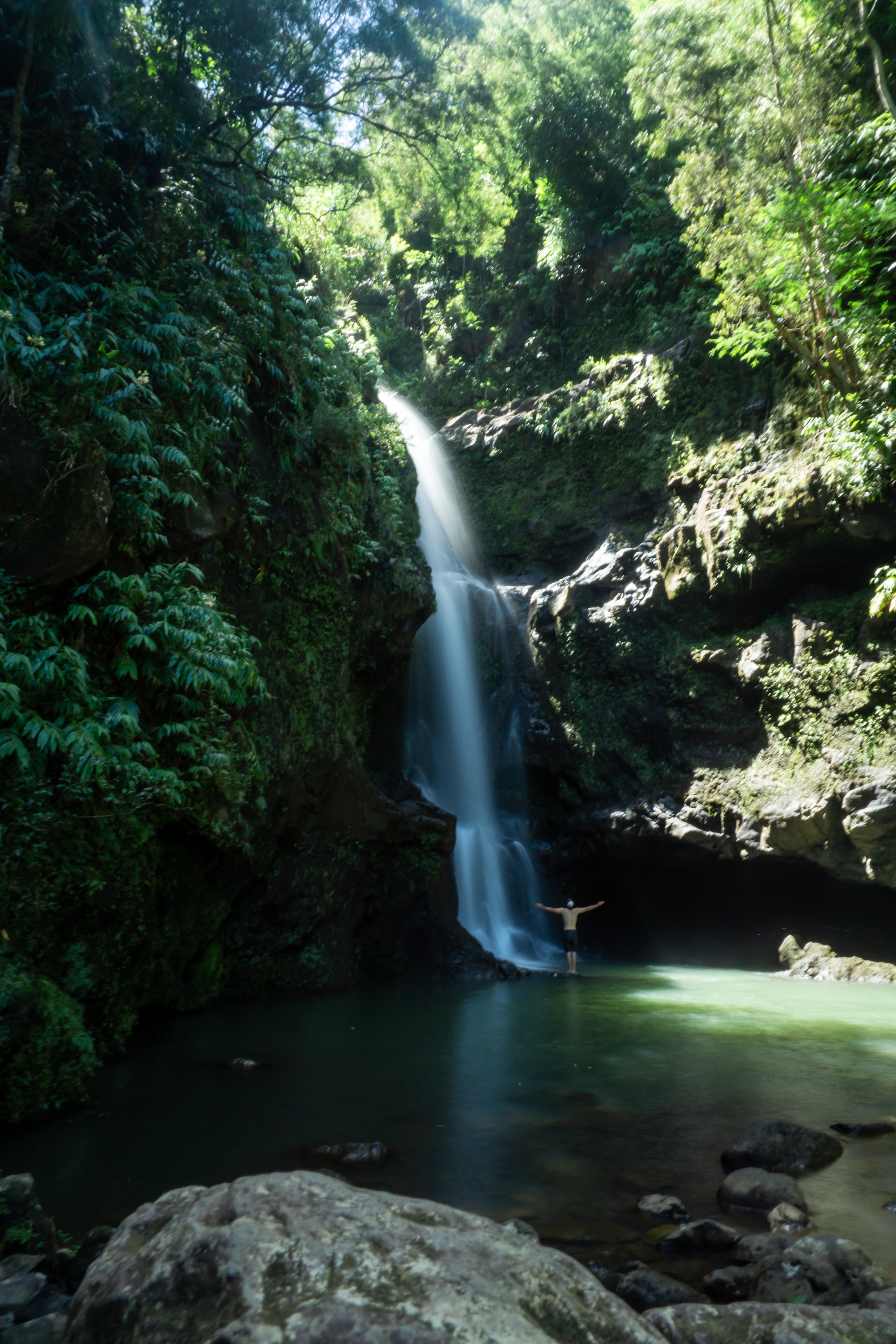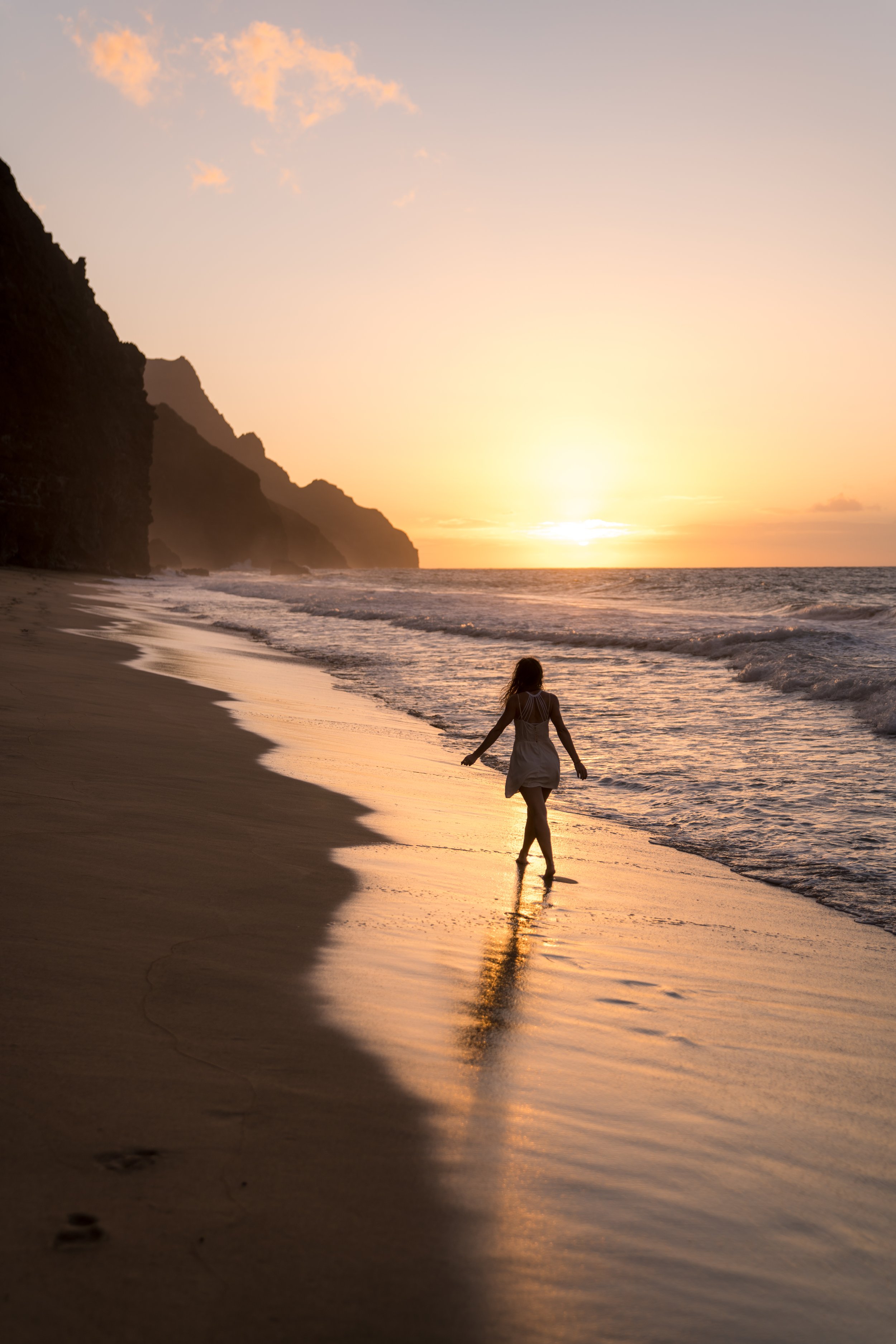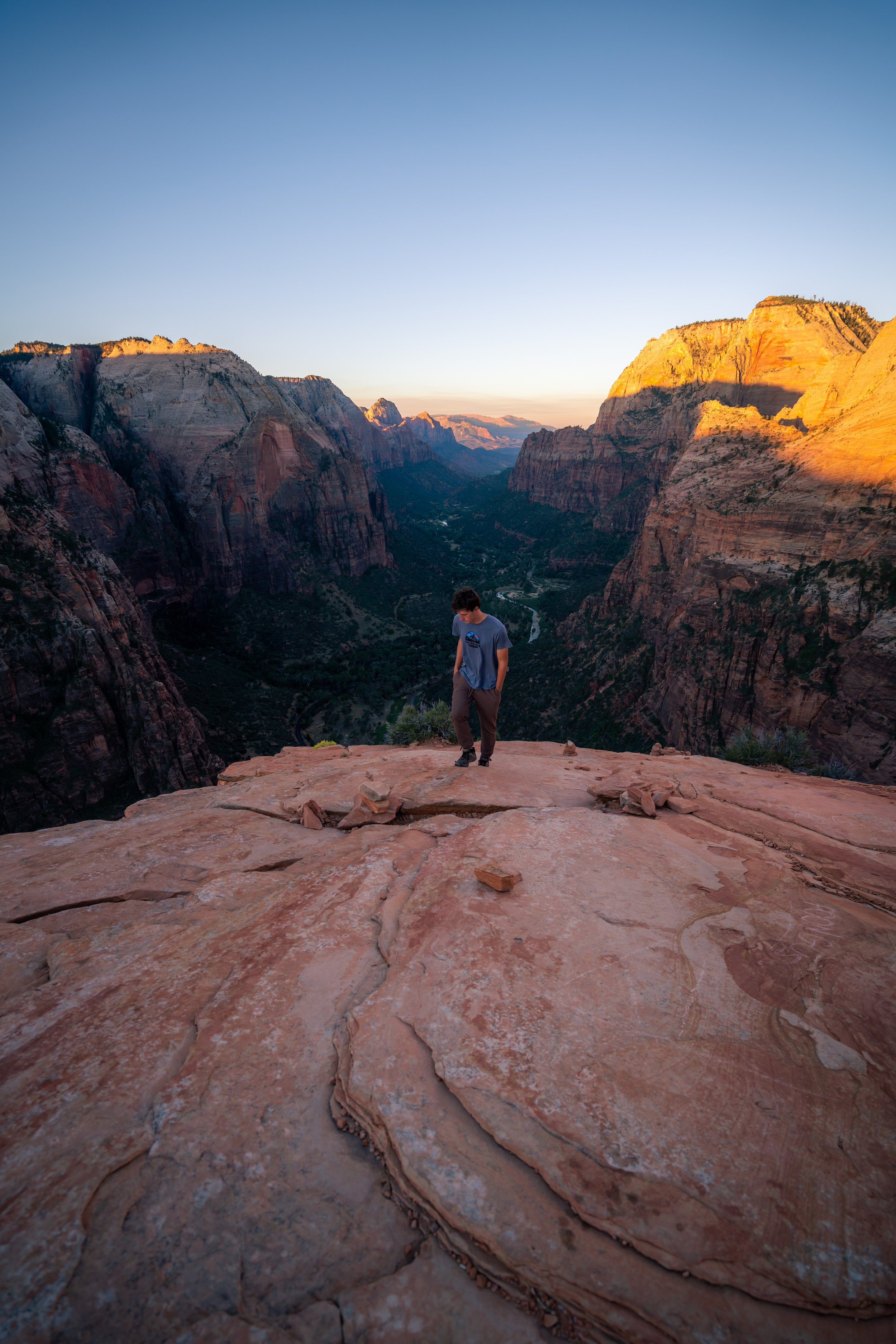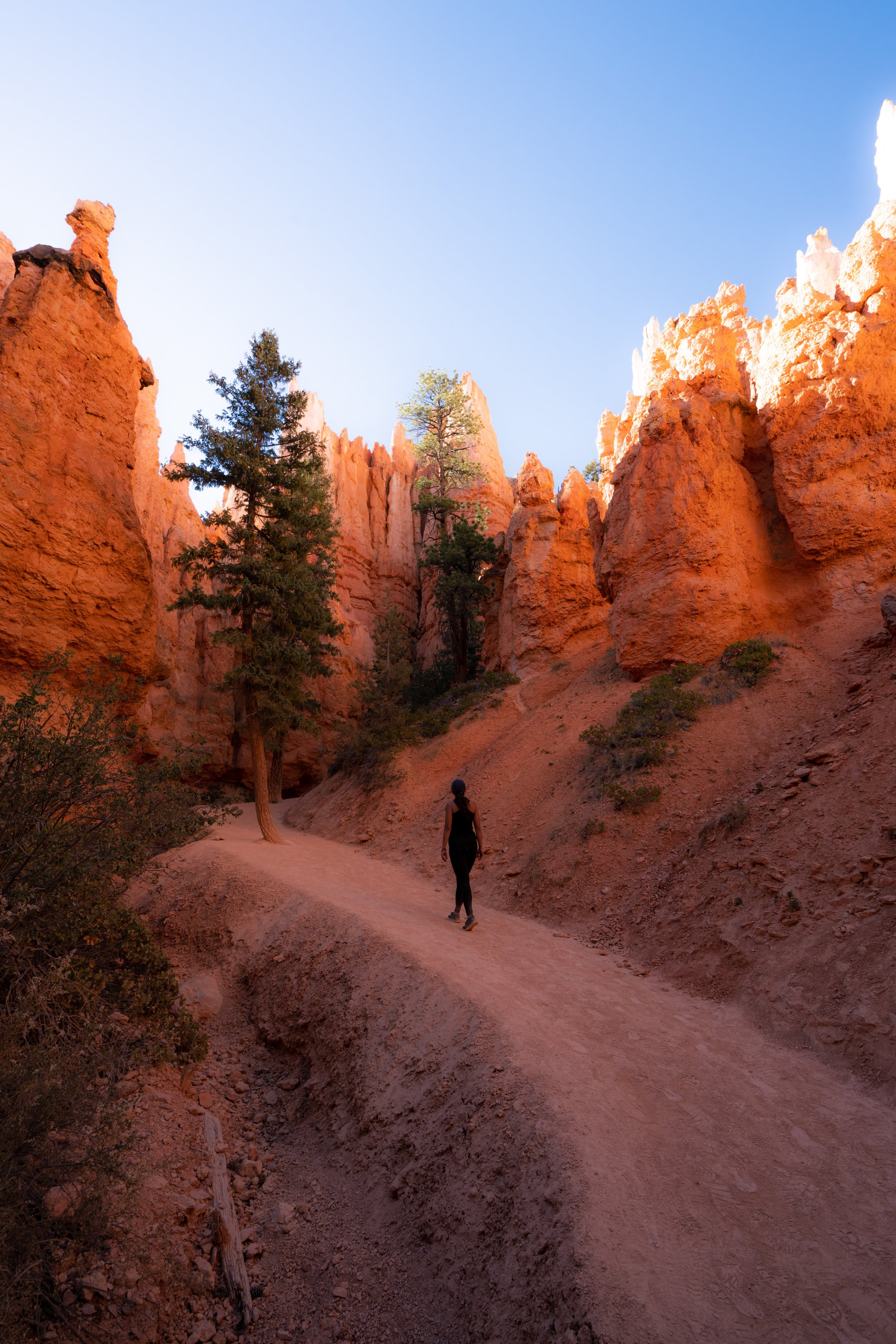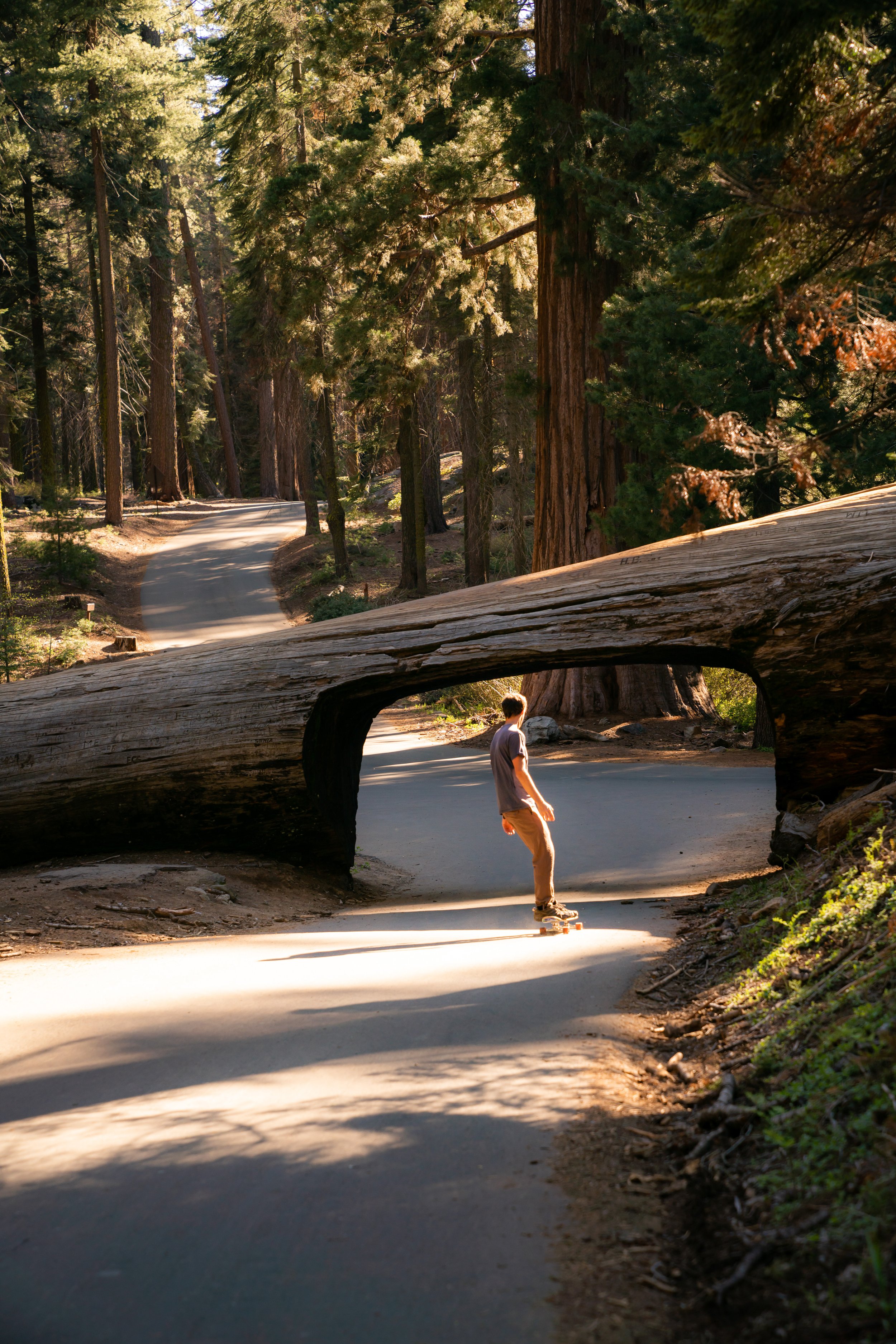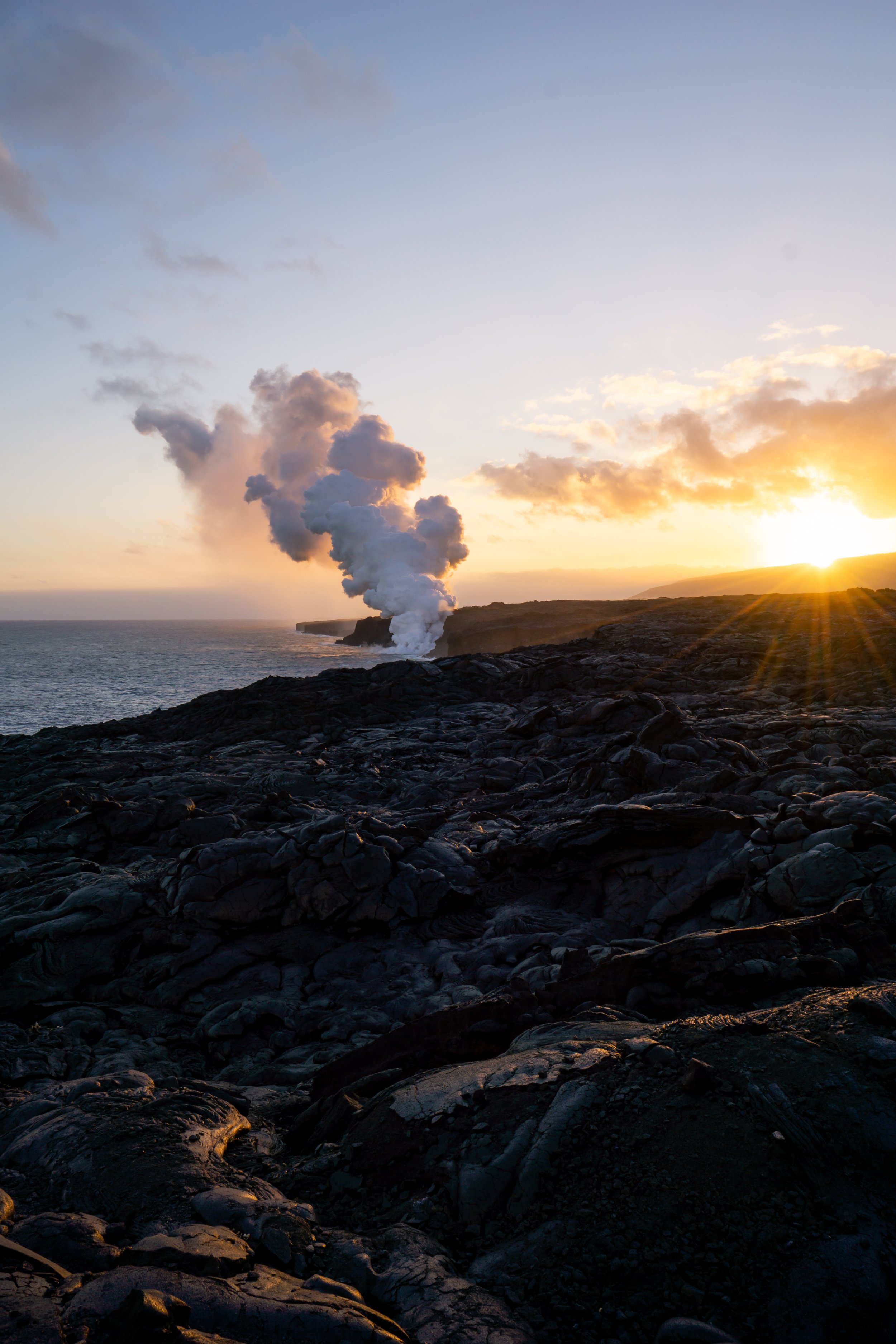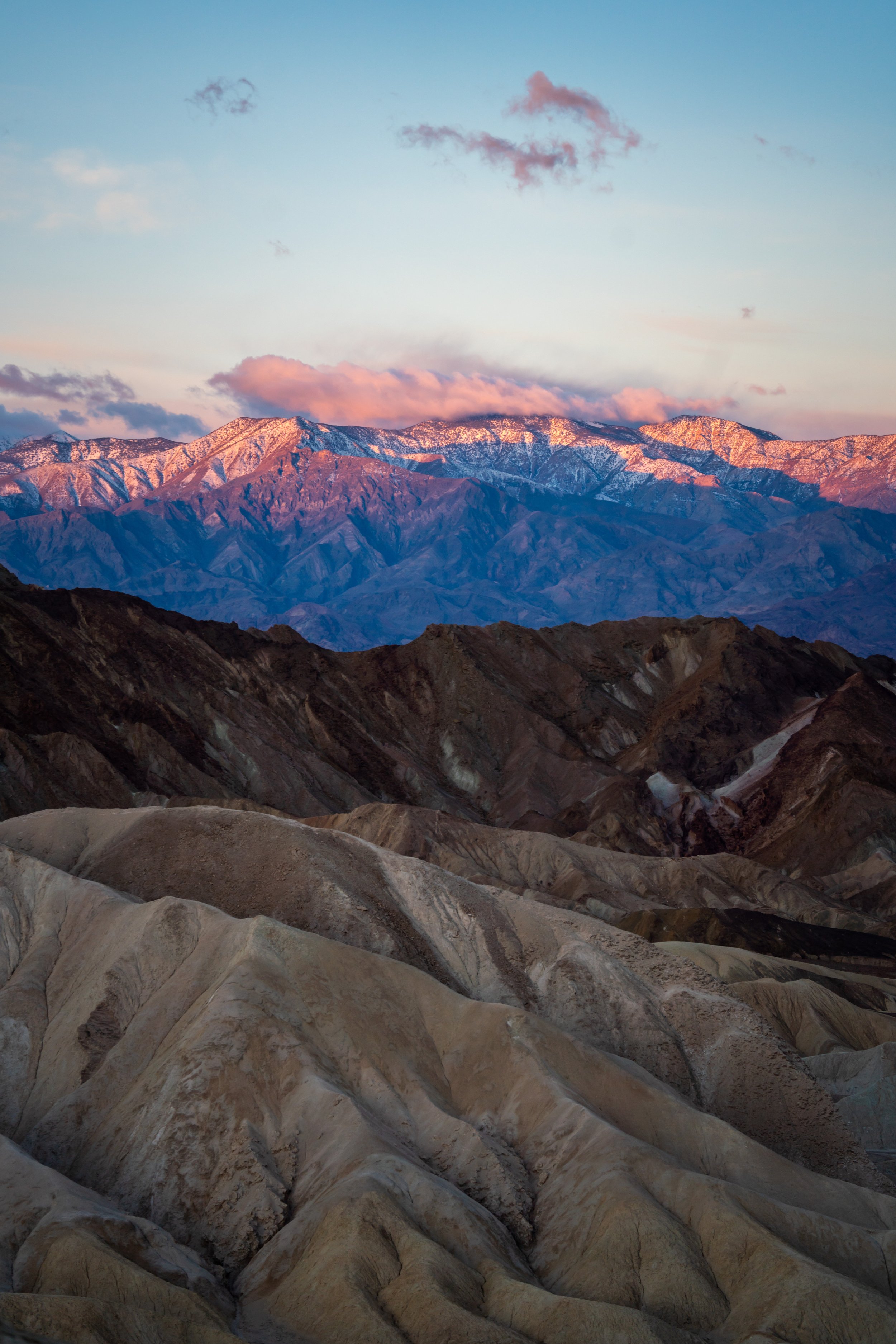Hiking the Pīpīwai Trail to Waimoku Falls in Haleakalā National Park on Maui, Hawaiʻi
Distance (Roundtrip): 3.8 miles / 6.1 km
The Pīpīwai Trail to Waimoku Falls in Haleakalā National Park on Maui is a favorite among both locals and visitors, as the relatively easy trail leads to the tallest waterfall on the island—towering roughly 400 ft. (122 m) tall!
For this reason, Waimoku Falls, along with the Kūloa Point Trail, is one of the two most popular final stops along the Hāna Highway before turning back around to make the long, windy drive back to the central valley.
All this to say, having the opportunity to spend time and enjoy the Kīpahulu District in Haleakalā is most practical by spending one or more nights in East Maui, instead of driving both ways on the Road to Hāna in one day. This way, you allow yourself the opportunity to maximize all the things to see and do on the scenic drive, as there is just too much to fit into one day on the highway.
Pīpīwai Trailhead Parking
Parking for the Pīpīwai Trail is located in the same parking lot as the Kīpahulu Visitor Center in Haleakalā National Park, about 10.3 miles (16.6 km) past Hāna.
That being said, the Kīpahulu District collects park entrance fees, meaning that it’s best to come prepared to pay to enter the National Park or bring an access pass before arriving.
Google Maps Directions: Kīpahulu Visitor Center
My Hawaiʻi Hiking Checklist
Osprey 3L Water Bladder - The Osprey 3L water bladder is the most universal hiking and backpacking water bladder on the market, and it’s my go-to because of the slide-off seal that allows it to be quickly filled from the top. Additionally, individual parts are easily replaceable, such as the bite valve.
Blister / Heel Protectors - I swear by these cheap, amazing heel protectors to prevent blisters for nearly every kind of hiking and backpacking that I do!
Black Diamond Headlamp - Personally, I recommend the Black Diamond Storm because it is one of the brightest, lightest, and longest-lasting headlamps on the market—and trust me, the weight-to-battery-life ratio really does matter!
Hiking / Trail Running Shoes - Depending on the type of trail, I prefer to use either the Keen Targhee for longer, more rugged hiking or the HOKA Zinal Trail-Running Shoe for lighter, less intense trails. In either case, both have been amazing to me for many years across countless environments, and both can be found in men’s and women’s sizes. - (Men’s Keen / Women’s Keen) (Men’s HOKA / Women’s HOKA)
Waterproof Rain Shell - You never know when it may rain, and I’ve learned over the years that a rain shell is far better than a rain jacket. By this, I mean that it’s best to have something that the water will roll right off of, which is why I recommend the Patagonia Torrentshell 3L available in both men’s and women’s sizes.
High SPF Sunscreen - Packing high-SPF sunscreen is a must for long days outside!
Hiking the Pīpīwai Trail
Despite the Pīpīwai Trail being a waterfall hike, some visitors may not be aware that the trail to Waimoku Falls is more of an uphill adventure than it may seem.
By this, I mean the Pīpīwai Trail gains about 700 ft. (213 m) of elevation over the course of 1.9 miles (3.1 km), making the hike a good workout as well.
Pīpīwai-Kūloa Point Junction
After just 0.1 miles (0.2 km), the Pīpīwai Trail splits with the Kūloa Point Trail, which leads to ʻOheʻo Gulch and numerous historical cultural sites located within the Kīpahulu District.
That being said, go left to continue on the Pīpīwai Trail, but if you would like to learn more about the full Kūloa Point Trail, I encourage you to read more in my separate post.
Read My Separate Post: Kūloa Point Trail (ʻOheʻo Gulch)
Then, turn right at the next split to continue across the Hāna Hwy.
The trail to the left leads back to the parking lot, or it’s where you would have come from if you didn’t start from the visitor center.
After crossing the Hāna Hwy, there are no more major turns to look out for on the rest of the Pīpīwai Trail.
Pīpīwai Banyan Tree
This Banyan tree in the photo below is the same beautiful tree that you may have seen in some viral social media photos from Maui.
Once the Pīpīwai Trail turns into boardwalks through the bamboo forest, you essentially have the harder uphill sections behind you.
Pīpīwai Stream
The Pīpīwai Stream crossing is typically the most challenging part of the hike for most people, and it’s important to know that the water level can vary drastically from being dry (like in the photo here) to a raging river, in which the Park Service is likely to close the trail.
By hiking past this point, you accept all the risks and potential legal consequences for entering a closed area.
I have personally witnessed rocks fall and strike people at Hawaiʻi waterfalls.
Waimoku Falls (Maui’s Tallest Single-Drop Waterfall)
Waimoku Falls is the tallest single-drop waterfall on Maui measuring at roughly 400 ft. (122 m)!
Furthermore, I think it’s important to know that Waimoku Falls is rain-fed, meaning you may see it with any amount of water, like the two different times I’ve visited in the photos below.
Native Plants on the Pīpīwai Trail
From the Kīpahulu Trailhead to Waimoku Falls, there are a variety of native Hawaiian plants to look out for, including Wiliwili, ʻĒkaha, Hala, and Koa, to truly only name a few.
All said, if you’d like to know more about these and other tons of native Hawaiian plants from across the islands, I encourage you to check out my separate post linked below.
Read My Separate Post: Native Hawaiian Plant Guide
More Maui Adventures
If you’re interested in reading about some more amazing Maui adventures, check out my separate posts below!
Best Hotels & Vacation Rentals on Maui
Since Maui is such a big island and driving from place to place can take a long time, many of the best places to stay are located on all different sides of the island.
I recommend starting your search on VRBO to compare places from Kīhei, Kahului, Lāhainā, Kāʻanapali, and Hāna.
Maui Airport-Hotel Shuttle
Prices on ride-share apps like Uber/ Lyft cannot beat the price of booking your hotel or vacation rental shuttle prior to arrival.
That being said, the shuttle options below are incredibly cheap, and they are a great option to get across North, South, West, and Upcountry Maui!
Best Way to Book Rental Cars!
I travel quite a bit, and I know firsthand that finding a good rental car deal can be a challenge, but that’s why I recommend comparing all of your options with Discover Cars.
In short, Discover Cars is a well-known, reputable business that allows you to search for the best deal across companies, and they have the best full-refund cancellation policy I’ve ever seen, valid up to 72, or sometimes even 48, hours prior to your reservation!
Book Here: Discover Cars
Visiting Other Islands
If you are visiting Maui or heading to another island, check out some of my personal recommendations for Oʻahu, Maui, Kauaʻi, Molokai, Lānaʻi, and Hawaiʻi Island (Big Island) in these separate posts.
If you’re trying to decide which island is right for your visit, check out my overview about each island in the post below.
Read My Separate Post: What is the Best Hawaiian Island to Visit?
What is the Best Time of Year to Visit Hawaiʻi?
The weather in Hawaiʻi can often appear to be warm and beautiful throughout the year, but in my experience, there is a lot more to consider when planning what time of year to visit the islands, such as what island you are considering, what sides of each island do you plan to stay, what activities are you most interested in, the wildlife, and countless other nuanced variables that can all impact the type of trip you can expect to have.
For these reasons, I highly recommend reading through my separate article to not only understand my thoughts regarding the best time of year to come to Hawaiʻi but also what you need to consider based on the time of year that you plan to visit.
Read My Separate Post: What is the Best Time of Year to Visit Hawaiʻi?
Safety
All hikes in Hawaiʻi should not be compared to trails outside of the islands, and hikers should exercise due caution on every adventure, given that many are extremely dangerous.
By this, I mean that Hawaiʻi is known for hot, humid weather, steep, dramatic, and unstable cliffs, and flash floods, which can occur without warning. Therefore, it is important that you check the local forecast, understand the physical condition of your entire group, and pack sufficient food and water before attempting any adventure.
Disclaimer
All information provided on this blog is for informational purposes only and is not intended to be a substitute for information or advice from qualified professionals or managing agencies.
Noah Lang Photography LLC makes no representations or warranties regarding the accuracy or completeness of the information provided here, and readers should use their own discretion, judgement, and seek professional advice where it is appropriate.
Furthermore, Noah Lang Photography LLC shall not be held responsible for any injuries, lost individuals, or legal issues arising from the use of information provided on this website, and if applicable, the above safety disclaimer should be referenced to provide a generic overview of the risks involved.
All said, the content on this blog is for the sole use of Noah Lang Photography LLC, and unauthorized use or reproduction of this content is strictly prohibited.
Safety
All hikes in Hawaiʻi should not be compared to trails outside of the islands, and hikers should exercise due caution on every adventure, given that many are extremely dangerous.
By this, I mean that Hawaiʻi is known for hot, humid weather, steep, dramatic, and unstable cliffs, and flash floods, which can occur without warning. Therefore, it is important that you check the local forecast, understand the physical condition of your entire group, and pack sufficient food and water before attempting any adventure.
As always, find the most up-to-date information and conditions on the official National Park website.
National Park Service: Haleakalā National Park
Disclaimer
All information provided on this blog is for informational purposes only and is not intended to be a substitute for information or advice from qualified professionals or managing agencies.
Noah Lang Photography LLC makes no representations or warranties regarding the accuracy or completeness of the information provided here, and readers should use their own discretion, judgement, and seek professional advice where it is appropriate.
Furthermore, Noah Lang Photography LLC shall not be held responsible for any injuries, lost individuals, or legal issues arising from the use of information provided on this website, and if applicable, the above safety disclaimer should be referenced to provide a generic overview of the risks involved.
All said, the content on this blog is for the sole use of Noah Lang Photography LLC, and unauthorized use or reproduction of this content is strictly prohibited.
U.S. National Parks Pass
Did you know that the same America the Beautiful Pass that grants access to all 63 U.S. National Parks can be purchased in advance at REI?
Yes, you can save time when you arrive by purchasing your National Park pass, along with your other outdoor gear, at REI before traveling to the park!
More U.S. National Parks
If you’d like to read more about some of my best recommendations when visiting other U.S. National Parks, check out some of my other posts below!
Disclosure
This post is not sponsored.
However, some of the links in this post are affiliate links, which means that I may earn a small commission if a purchase is made through one of those links. This commission comes at no additional cost to you, and I only recommend products that I personally use and believe will add value to my readers. Thank you for your support, which enables me to continue creating more!
To read the full privacy policy, click here.

About This Blog
Noah Lang Photography, also known as @noahawaii, is 100% reader-supported!
I do not accept guest articles or sponsored content of any kind on my blog, which is why, if you enjoy the outdoor and travel content I create, please consider buying me a coffee!
I appreciate your support, which helps me continue to keep this blog alive!













